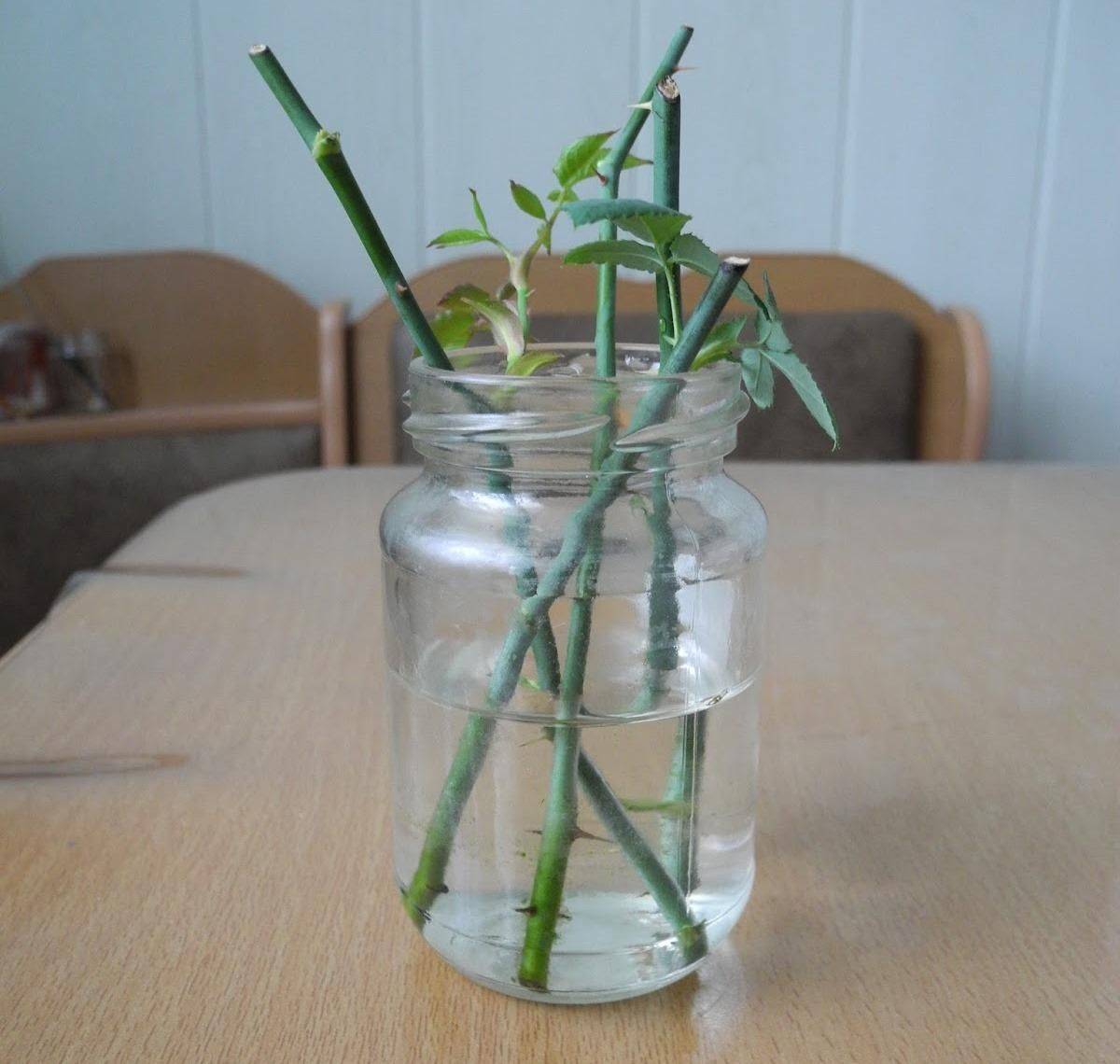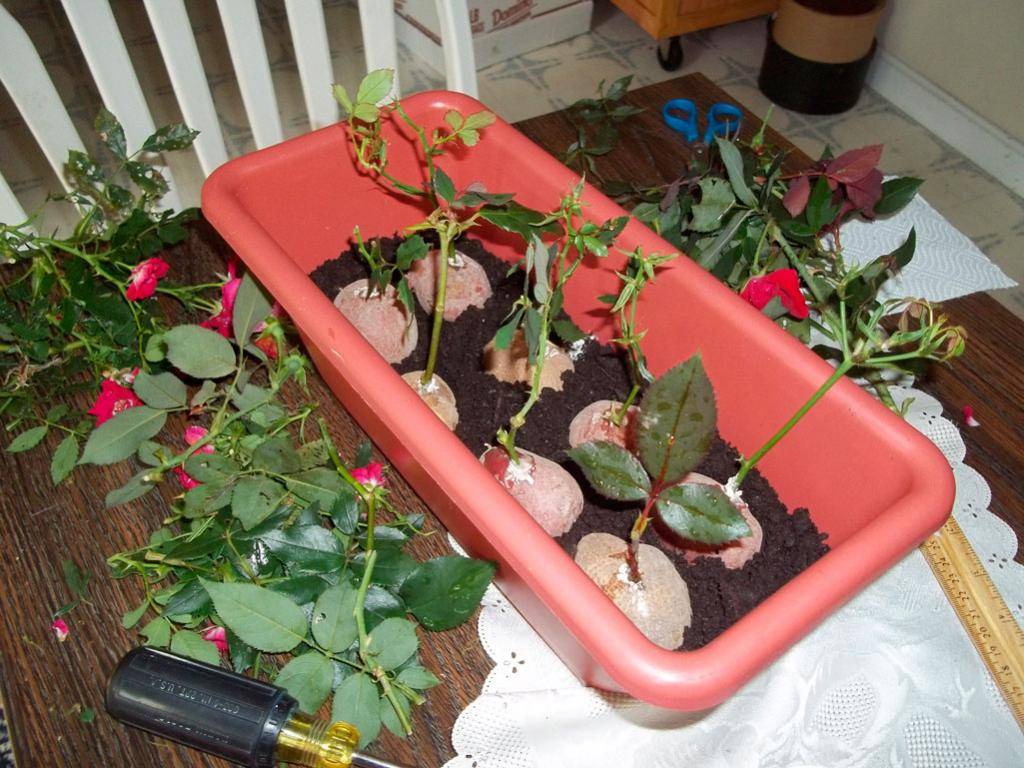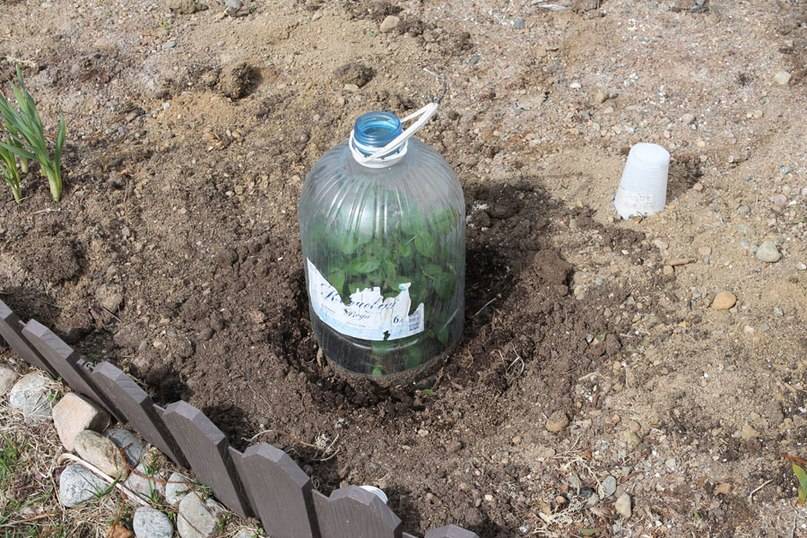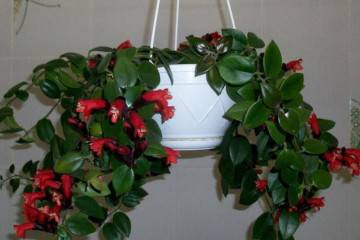Reproduction of a rose by cuttings at home
Content:
Propagating roses by cuttings at home is one of the best ways to turn your garden into a real rose garden. A rose grown from cuttings retains all the properties of the mother plant, and therefore this method is well suited even for breeding hybrid varieties. If you know a number of rules on how to propagate roses at home with cuttings, the process itself becomes simple and effective.
Reproduction of a rose by cuttings at home
Using the cuttings method, you can plant not only roses growing in the garden near the house, but also flowers presented in a bouquet. This method does not always work, but it is still worth trying. Perhaps something will work out, and a new, unusual, but such a beautiful variety of roses will appear on the garden bed near the house.
How to propagate roses correctly - what you need to know
For a successful grafting procedure, you need to choose mother plants of certain varieties and know their characteristics. Some varieties are highly immune and adaptable, others are more whimsical. Therefore, the best option is those roses that already grow in the area and are well adapted to it.
After the variety is selected, you need to carefully examine the prepared stems, which should already be a little woody, but not too hard. It is for this reason that it is problematic to grow a flower from a bouquet, because there is already a thick, hardened trunk. But there is always a chance. Soft, young stems are also not suitable, so the mother plant must be at least two years old.
The best time to cut cuttings is in the middle of summer, when the flowering time is just coming to an end. The cuttings that have the best chance of successful rooting can be harvested immediately afterwards.
But in the fall, closer to winter, it turns out to choose suitable stems. The most important thing is that the thickness of the appendix does not exceed 0.5 cm (the diameter of a regular pencil). It should also be carefully checked for disease and damage.
The optimal size of cut stems is 3 buds. After the material has been selected, you can graft it, choosing the most convenient method for this.
Preparation for growing roses from cuttings
Cuttings are prepared in spring, summer and stored in winter. In summer, autumn and spring, the step-by-step instructions are as follows:
- The lower cut of the workpiece is made at a distance of 2 mm under the kidney, at an angle of 45 °. The length of the handle must be at least 15 cm.
- The upper part is made straight at a distance of 1-1.5 cm above the kidney.
- The lower leaves are cut off completely, the upper ones are shortened by 1/3.
- The thorns are cut off.
Further, rooting takes place in one of several ways. The most popular is in water with a solution of Kornevin or another root growth stimulator.
To properly cut a rose, you need to use a sharp, disinfected knife or pruner.
How to prepare the soil
The soil for the initial planting of cuttings should be loose, allow water and air to pass through well, disinfected and with good drainage. It is best to use a commercial rose mix. If this is not possible, the substrate should consist of peat, river sand and fertile land in equal amounts.
Rooting methods for cuttings
Most growers use the standard, proven method of rooting - in water. But there are other, more original options for propagation by cuttings.
Rooting in water
Rooting a rose in water is the safest way to grow a new flower. It is simple and straightforward, perfect for beginner florists.
The prepared cuttings are collected in a bunch, placed in a glass of water, to which a root growth accelerator, for example, Kornevin, is added. A mixture that stimulates the germination of roots, you can prepare yourself: 0.5 tsp. mix honey with a glass of water. The water should cover about 1/3 of the stem, not stagnate and change about once every 2 days.
After the roots appear, future plants are placed in boxes with soil mixture or immediately planted in open ground (if the procedure was carried out in spring or early summer).
Planting rose cuttings in potatoes
The next way you can propagate a rose is by planting cut stems in potatoes.
Cuttings are chosen a little longer - up to 20 cm. They are stuck into young potatoes, from which the eyes are removed. After that, you can plant potatoes with future roses immediately in open ground to a depth of 15 cm, having previously covered a layer of sand in the holes, or you can hold it at home in prepared soil or even water.
When disembarking on the street, you will need shelter. Potatoes provide the rose with all the nutrients it needs to take root quickly. Systematically, after 5 days, it is required to water the seedlings with sweet water - 2 teaspoons of sugar per glass of water. After 2 weeks, the shelter is removed.
Rooting cuttings in a bag
You can also root flowers with a simple plastic bag.
Sterile soil is placed there and marsh sphagnum is introduced (as fertilizer). Moss is impregnated with aloe juice and water (1: 9). The bag is tied up and taken out into the street. The first roots will hatch in a month.
Rooting prepared summer cuttings in the ground
Summer cuttings are easier to root in the ground, since they have enough time to gain strength and prepare for winter. The immunity of such flowers is higher, and accordingly, their survival rate increases.
Trannoy method
The main idea of this method is to allow the stem to get the maximum supply of nutrition from leaves to pruning. To do this, the stems are cut at the end of flowering, flowers and dried leaves are removed from them.
After the buds begin to swell, the stem will begin to lignify. Once this process has begun, they must be immediately planted in the soil before the leaves appear. The stems are cut into cuttings and planted in several pieces in one hole.
So the grower hopes to root at least 1 cutting from the group. From above, future seedlings are covered with plastic bottles, periodically watered, weeded and ventilated.
Method "Burito"
Despite the fact that growing roses using this method is practiced, few people can call it effective. It is more suitable for those who like to experiment.
The stems are cut into cuttings, the lower part of which is soaked in a root growth stimulator. The blanks are wrapped in damp newspaper and placed in a dark, cool place, such as a cellar.
Theoretically, after 2 weeks, future roses will have roots. Thanks to the material in which the cuttings are germinated, this method has received a more common name - cuttings of roses in the newspaper.
How to care for planted cuttings
Proper care of rose seedlings will help the florist find a luxurious garden without making any special efforts and saving money. Basic care rules:
- Regular, but not plentiful watering of the shoots. The water should not stagnate, otherwise the sensitive roots will rot.
- If the weather is hot, dry, you should not increase the watering frequency, or make it more intense, just spray the shoots.
- Young plants need a comfortable temperature. In cold weather they need to be covered, and in hot and sunny weather they need to be shaded.
- After it becomes clear that the plant has taken root, you can start feeding with special fertilizers.
Growing roses in your garden is the dream of many flower growers. Some are simply afraid to start, considering that this activity is very costly and troublesome. However, do not worry, difficulties often arise only at the very beginning. In fact, everyone can plant roses, a little effort will pay off with the result. The main thing is to choose the right variety corresponding to the climatic zone. And then the roses will grow, multiply and delight the eyes of the grower himself and those around him.





















